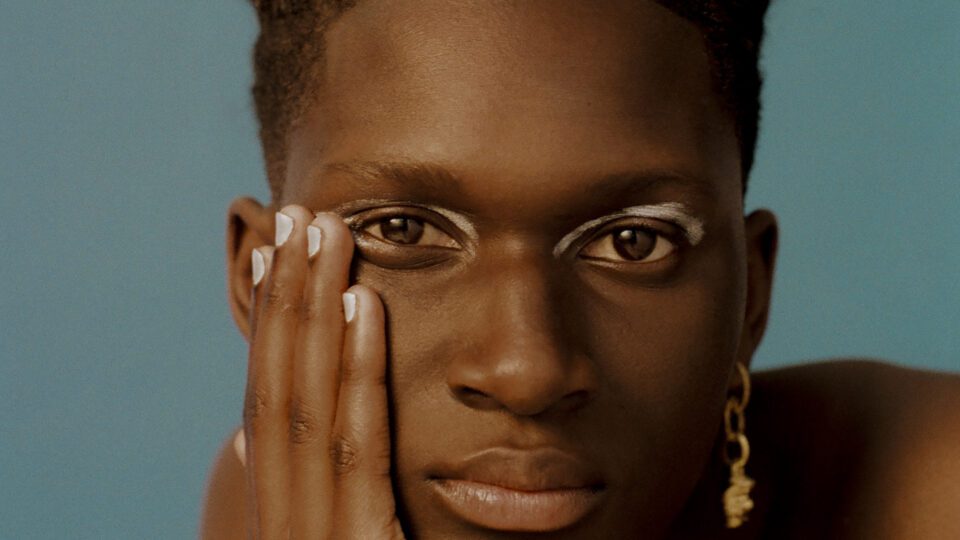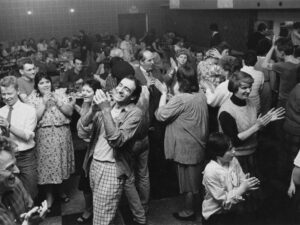Division, uncertainty and restlessness. The last year in the UK has witnessed a turbulent series of events, from record high inflation rates to political mayhem and increasingly hostile immigration policies. It has severely impacted those who are most vulnerable, disproportionately affecting those who are already living in or on the margins of society. According to the Joseph Rowntree Foundation study, over 1 million children were found to have experienced destitution last year, whilst half of destitute households tried to get by on less than £85 a week after housing costs. Emerging from this is a bewildering sense of difficulty and frustration. Now, more than ever, there is an urgent need for compassion. This is where British Journal of Photography’s sixth edition of Portrait of Britain enters, introducing a selection of winning images that capture everyday people and communities. The project, in partnership with JCDecaux, screens 100 winning photographs across the UK for one month. A shortlist of 200 also features in a publication by London-based publisher Bluecoat. It’s a compendium that unites core values of diversity, empathy and authenticity, capturing the nuance of extraordinary, realised lives. As CEO of British Journal of Photography Mick Moore notes, “It is in each other that we see ourselves and form our sense of place.”


Throughout, there’s a striking sense of the ordinary. Whilst the project showcases famous faces such as Lily Allen and Ian McKellen, far more common is the recurrence of everyday people. In Naoto Yoshida’s Priyanka Pattni at Home, a subject lies down, holding a stim toy between their fingertips. The slinky blue object, ever so slightly out the focus of the camera, is designed to provide comfort and reduce sensory overload. It’s a portrait part of a body of work that celebrates “the ordinary, lived experience of neurodivergent people, particularly the moment of repose, helping show the interplay between them and their surroundings.” Photographs move between states of comfort and vulnerability, inviting viewers to fully experience every moment. Naoto explains to UCA, “The impetus for this project was a sense of unease from the realisation that I simplified the lived experiences of neurodivergent individuals. Research led me to ponder how to visualise ‘invisible’ disabilities.”

Elsewhere, we’re given scenes of unadulterated joy. A boy grins at a basketball in Hackney. The warm afternoon sun casts a timeless glow over his face. A young girl in a silver sequinned dress curls into a green chair, staring wistfully into the camera. In Naseema Begum by Peter Flude, a woman in a burqa emerges from the Dorset sea, the lower half of her clothes drenched. She stands, defiant, against the onset of the surging waves. Flude writes, “Naseema never considered herself a strong swimmer. But after witnessing her daughter nearly drown on holiday, she realised she needed to overcome her phobia of water. Years later she joined a women-run boating and sailing club and took a course at the Black Swimming Association and over time found her confidence in the water. She now swims in the sea at beaches around the country.”


In Jaime Prada’s Celebrating Queer Joy, two figures in sweaters tenderly embrace on a white duvet, their heads titled together. Prada celebrates the multifaceted experiences of intimacy, exploring the complex and rich beauty of trans bodies and queer couples. It’s an affecting image, particularly in light of the current government’s legislation, notably its recently published guidance that cracks down on young people’s ability to transition and question gender norms in schools. Above all, it’s a portrait that shines in a factual, unapologetic way. As Simon Bainbridge at British Journal of Photography explains, “The subjects of the 200 images here are not sorted by types or beliefs or allegiances. They do not represent anyone else but themselves. And this is how these portraits can begin to make small differences; challenging the easy assumptions we make about each other, offering alternative narratives through the stories of individuals. The simple act of looking into someone else’s eyes and considering how we are similar, how we are different, and how we define ourselves and our community through these judgments, is a dialogue.”
Portrait of Britain Vol. 6 | bluecoatpress.co.uk
Words: Chloe Elliott
Image Credits:
Portrait of Britain Vol.6 ©, Susie Brady, Jose, London.
Portrait of Britain Vol.6 ©, Naoto Yoshida, Priyanka Pattni at Home, Crawley, West Sussex.
Portrait of Britain Vol.6 ©, Taemina Ha, Hackney Downs, London.
Portrait of Britain Vol.6 ©, Peter Flude, Naseema Begum, Dorset.
Portrait of Britain Vol.6 ©, Jamie Prada, Celebrating Queer Joy, Edinburgh.
Portrait of Britain Vol.6 ©, Anna Neubauer, Maya, London.





